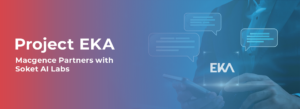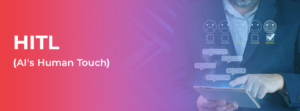- Digitization and Sensors Data Interpreted
- Investigating the Functions of Sensor Data Within Machine Learning
- Sensor Data: Usage in Different Sectors
- Utilizing Sensor Data for Business Analysis: Pros and Cons
- Best Techniques Used For Gathering, Cleaning and Making Use of Sensor Data
- The Future of Sensor Data and Machine Learning: Emerging Trends
- Case Studies on Successful Implementation of Sensor Data in Machine Learning
How to Collect Sensor Data for Machine Learning Projects
Data has become an essential part of the modern world as everyone can innovate with the right information at hand. One of the most crucial types of data coming in among the many is sensor data. For example, smart devices are always collecting data, whether it is about the number of steps through a fitness tracker or the temperature of a house with a thermostat. All this sensor data provides a wealth of resources for machine learning developments across various sectors. In this blog, we will discuss the significance of sensor data, its implementation in machine learning and how companies can utilize it as a competitive advantage.
Digitization and Sensors Data Interpreted
Sensor data considers the data collected from numerous sensors that respond to different forms of physical input. Such sensors could be embedded in ordinary devices like mobile phones, cars or even machines. The information that is captured varies from temperature and humidity to speed and even geographic area which has a plethora of uses.
What makes sensor data vital is the fact that it allows data compression, analytics and aids streamlined functions. For firms, this means more operational effectiveness, improved customer satisfaction and better choices. In the age of digitization where data-centricity is the order of the day, the importance of sensor data is growing significantly.
Investigating the Functions of Sensor Data Within Machine Learning

To give an example, if I put a machine learning model in charge of making predictions about commodities, the model will continuously request data in order to enhance its predictions and train itself. In this sense, the machine sensor data is extremely vital as it helps to improve the models. Let’s consider predictive maintenance: a sensor that can get data on a part of a machine to know how long it can last before it needs replacement.
Sensor data has a proven record of boosting up accuracy in predicting specific targets when combined with the machine learning algorithms. The specific integration of sensor data with machine learning has enhanced the development of smart technologies, robots, and customized services.
Sensor Data: Usage in Different Sectors
Firms across sectors are using sensor data to enhance their operations and services. Tracking devices implanted in patients’ bodies allows clinicians to monitor them remotely and manage clinical conditions more efficiently. With the help of sensors, farmers are also able to keep track of soil conditions for better management of irrigation and other farming activities.
Another good example would be the automotive sector wherein sensor data is a fundamental requirement to enable the development of assisted or autonomous vehicles. These applications not only provide a means of enhancing safety but also an insight into how the future of transportation systems will look like. Grasping sensor data relative to machine learning will be the most vital element of maintaining a competitive advantage in this quickly changing technological environment.
Utilizing Sensor Data for Business Analysis: Pros and Cons
While the use of sensor data comes with great benefits, there are several hurdles that need to be tackled. The first major hurdle is that most sensors are not entirely reliable as there is an inherent risk that data quality and accuracy across the board will take a hit. Furthermore, the amount of data produced is sometimes too much for basic machines leading to the need for advanced data processing and storage methods.
Regardless of these obstacles, business opportunities exist in great abundance. Companies which are able to successfully take advantage of sensor technology will be able to better analyze their operational processes, determine their customer’s character and most importantly improve their position in the market. Therefore, such organizations which focus on this strategy will be able to turn sensor data into a competitive advantage.
Best Techniques Used For Gathering, Cleaning and Making Use of Sensor Data
In order to effectively gather useful insights from sensor data, companies need to set the bar higher by implementing measures that allow it to smoothly operate within the high potential boundary. The first step in completing this goal is installing sensors that are of good quality and those that measure the right data accurately without deviation from norms. Besides, the sensor should be maintained properly and calibrated regularly to avoid variations in performance.
The next step includes the extensive process of data cleaning, as data in its raw form will be relatively dirty and filled with inaccuracies. It would be beneficial to implement machine learning models to help analyze the dataset and extract relevant information. The last step to ensure the complete conductivity of the analysis and to increase the customers’ confidence is to prioritize data compliance and safety.
The Future of Sensor Data and Machine Learning: Emerging Trends
Emerging trends in sensor data and machine learning will surely take the industrial world by storm in the most positive way possible. Developing fully interconnected worlds fit for purpose like the convergence of IoT and sensor technology. For the betterment of our economy, normalizing real-time data analytics through more effective decision making will reduce the time required to make crucial decisions.
More so, all the existing computing resources at data collection nodes will enable a faster and more efficient response by performing data processing at the data collection node thus minimizing the delays involved. Sensor data is a relaying aspect of innovation and it is clear that it is the core factor of intentions regarding the future of machine learning as we know it.
Case Studies on Successful Implementation of Sensor Data in Machine Learning
Many Companies have been able to gainfully exploit sensor data for machine learning to great effect. One of the leading logistics firms used sensor data from the fleet to manage its delivery routes, thus enabling it to cut down on fuel costs.
A further example is a major retail chain that integrated tag based analytics to enhance people counting and customer contact, thus optimizing and increasing sales. These case studies show that businesses can achieve a lot by incorporating sensor data and that similar applications exist in other sectors as well.
The Significance Of Sensor Data With Respect To Decision Making In Strategy Implementation And Management
To summarize, sensor data is vital in facilitating invention and making decisions in the current digital age. Any business which recognizes this fact and uses it suitably for machine learning can create more opportunities for expansion and achievement.
In order to be relevant, organizations have no option but to procure the required skills , tools and structures to optimize the use of sensor data. This will allow them to be able to effect change and also be able to compete in their industries. If you are interested in learning more about sensor data and machine learning, you should try accessing additional resources related to these areas.
FAQs
Ans: – Sensor data in machine learning encompasses all the raw data that is derived by sensors and used to train various models, make predictions or improve algorithms. It is real time and with a lot of detail, thus enriching the use of machine learning in dissimilar ways in different industries.
Ans: – Businesses can benefit by gaining valuable insights into operational efficiencies, customer behavior, and market trends. For example today sensor data supports automation, improved decision making and even targeted marketing enabling one to stand out among competitors.
Ans: – Data security, accuracy, and compliance are the most critical questions. For instance, sensors are more prone to errors or inaccuracies, which might result in them providing a large amount of futile data. Additionally, researchers create enormous amounts of data that are hard to analyze or store.
You Might Like
February 28, 2025
Project EKA – Driving the Future of AI in India
Artificial Intelligence (AI) has long been heralded as the driving force behind global technological revolutions. But what happens when AI isn’t tailored to the needs of its diverse users? Project EKA is answering that question in India. This groundbreaking initiative aims to redefine the AI landscape, bridging the gap between India’s cultural, linguistic, and socio-economic […]
March 24, 2025
Natural Language Generation (NLG): The Future of AI-Powered Text
The ability to generate human-like text from data is not just a sci-fi dream—it’s the backbone of many tools we use today, from chatbots to automated reporting systems. This revolution in artificial intelligence has a name: Natural Language Generation (NLG). If you’re an AI enthusiast or a tech professional, understanding NLG is essential for keeping […]
March 24, 2025
HITL (Human-in-the-Loop): A Comprehensive Guide to AI’s Human Touch
The integration of Artificial Intelligence (AI) in various industries has revolutionized how businesses operate. However, AI is not infallible, and many applications still require human intervention to enhance accuracy, efficiency, and reliability. This is where the concept of Human-in-the-Loop (HITL) becomes essential. HITL is an AI training and decision-making approach where humans are actively involved […]
March 7, 2025
Data Annotation – And How Can It Build Better AI in 2025
In the world of digitalized artificial intelligence (AI) and machine learning (ML), data is the core base of innovation. However, raw data alone is not sufficient to train accurate AI models. That’s why data annotations comes forward to resolve this. It is a fundamental process that helps machines to understand and interpret real-world data. By […]


 Previous Blog
Previous Blog







